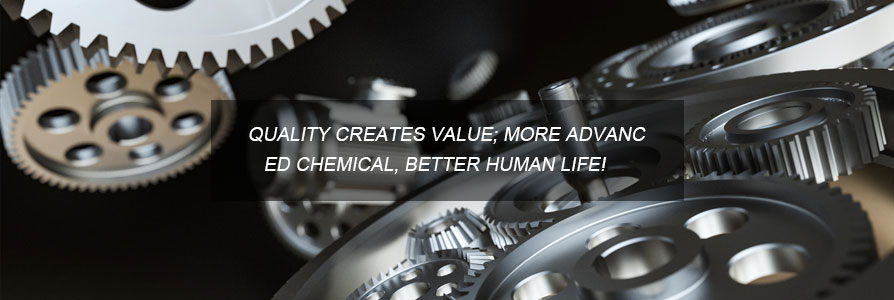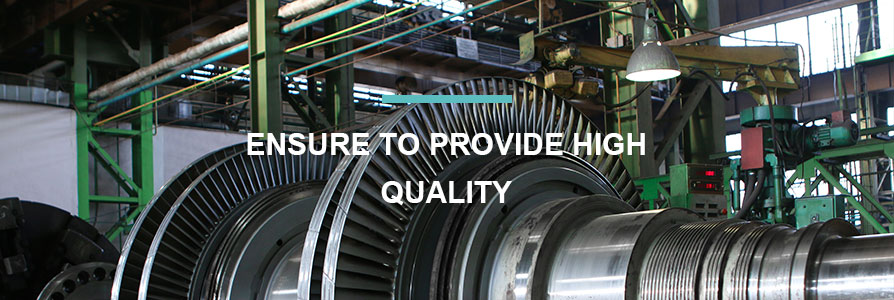Why is Stainless Steel Casting Better?
The Benefits of Stainless Steel Investment Casting
Suppose you want to manufacture a robust product. In that case, you sometimes need a specific component—with corrosion resistance, high dimensional accuracy, smooth surface finish, complex geometries, and a high level of detail.
youzhen Product Page
If you don’t find it fast, you’ll struggle with higher maintenance costs, expensive machine downtime, and customer complaints.
Your solution might be stainless steel investment casting. They’re the go-to answer for many manufacturers.
What is stainless steel investment casting?
Stainless steel investment castings are components manufactured through the investment casting process.
This process begins with a wax pattern created using a 3D CAD model. The wax pattern is then used to create a ceramic mold. This mold is used to produce the stainless steel investment casting. (We’ll explain more in a moment).
What industries use stainless steel investment casting?
Stainless steel investment casting can produce good surface finishes, complicated shapes, a high level of detail, and corrosion resistance. These features are essential for many industries, including:
- Aerospace
- Automotive
- Food Processing
- Desalination Plants
- Pump Manufacturers
- Machinery Producers
- Medical
- Mining
- Petrochemical
- Agriculture
- Energy
What are some common parts made of investment castings?
You can use the investment casting process to produce turbine blades, medical equipment, firearm components, jewelry, golf club heads, gears, pulleys, valve components, doorknobs, medical tooling and equipment, auto parts and components, airplane parts, kitchenware, utensils, cookware, gearbox cases, automotive cylinder heads, cylinder boxes, pipes, tubes, assemblies, plus many other machine components — anything with complex geometry benefits from this technology.
Check out this TFG investment cast Chain Sprocket used in the logging industry.
Who profits most from investment castings?
You’ll get the most significant advantage from using investment castings if your part:
- has a complicated shape that would be difficult or impossible to produce with other casting methods
- requires exceptional surface qualities
- needs tight tolerances
- prefers minimal surface finishing or machining after casting.
What are the benefits of stainless steel investment casting?
Stainless steel is a common material for industrial and commercial castings because it offers excellent mechanical properties and corrosion resistance, making it long-lasting in harsh environments.
The Federal Group (TFG) has extensive experience manufacturing stainless steel investment castings from various alloys to get you the corrosion resistance, mechanical properties, and part geometries that perform best in your application. You’ll derive the following benefits:
- Corrosion resistance—for fasteners in demanding environments.
- Heat resistance—outstanding performance at elevated temperatures.
- Precision tolerances—not possible with other manufacturing processes.
- High level of detail—including fine undercuts and threads.
- Superior surface finish—as good as or better than machined parts.
How does the investment casting process work?
Investment casting is thousands of years old. “Investment” refers to the mold being filled or invested with metal. Investment casting was initially used to produce decorations, religious figures, and jewelry. Today, this process makes intricate parts for many industries with brilliant, smooth finishes out of solid and corrosion-resistant metals. Here are the steps:
- Create the pattern. The pattern defines the geometry of the finished part. It’s made of wax. Typically the wax is molded in a metal die created using a 3D CAD model. But, for very short runs, we can machine the wax directly.
- Build the tree. We attach several wax patterns to a wax rod to create a tree structure.
- Make the shell. We dip the tree into a ceramic slurry and allow it to dry. Several dipping and drying cycles are used to build a robust ceramic shell for the rest of the process.
- Remove the wax. The shell is turned upside down and heated. The wax runs out (that’s why it’s sometimes called lost wax casting). Then the shell goes into a high-temperature furnace to burn off any remaining wax and to strengthen the shell.
- Cast the metal. Molten metal is poured into the shell. The tree we built in the second step defines where the metal goes. Now a metal part exists where each pattern used to be.
- Remove the shell. The ceramic shell is broken away, leaving the tree structure—now only of metal
- Finish the parts. Parts are carefully cut from the metal tree structure. These parts are ground, polished, and machined into the final form.
- Inspect the parts. Dimensional inspection and non-destructive testing (NDT) are performed to guarantee conformance to all required specifications.
How does investment casting compare to other forms of casting?
Your goal as a manufacturing professional is to develop a part that produces the desired function, has the desired appearance, conforms to customer requirements, and has the lowest final cost at a given production volume.
Here’s how investment casting compares to three other metal casting processes:
- Investment Casting: excellent (tight) tolerances, excellent surface finish, suited for low to medium volumes. Uses a precision ceramic mold.
- Shell Mold Casting: fair tolerances, good surface finish, suited for medium volumes. Uses heat-bonded sand patterns and cores.
- Greensand Casting: poor tolerances, fair surface finish, suited for low-medium volumes. Uses a clay-like substance to bond sand particles together.
- Permanent Mold Casting: good tolerances, very good surface finish, suited for medium to high volumes. Uses a permanent mold (generally made of steel or cast iron) reused repeatedly.
The information above aims to give you an overview of the process. The complexity of your part and the alloy you need will help you determine your best choice.
Visit our investment casting capabilities page for more information.
Which investment casting manufacturers are best?
Pick a manufacturer not tied to any one metal fabrication technology—one that has a team to guide you through your entire decision-making journey.
Find one that will help you balance out tooling and labor costs against the mechanical and aesthetic requirements of the part—a team of experts to help you understand the lowest final cost of the component at a given production volume.
TFG can help you “do the math.”
FAQs
Why do they call it “investment” casting?
Investment means to envelop or surround. The ceramic slurry surrounds the wax pattern to produce the casting mold. So that’s how we get the name investment casting.
Why is precision investment casting so expensive?
Tooling and labor costs are moderate and high, mainly due to the time consumed for the dip-and-dry cycles for the ceramic slurry.
For more information, please visit Stainless Steel Casting.
Featured content:How Are Automotive Quality Standards Evolving?
But, if you need complex part geometries and excellent surface finishes, investment casting will give you what you need without spending time and money on extensive post-casting finishing operations.
It’s a balancing act, but many manufacturing professionals recognize the benefits of stainless steel investment castings.
Contact TFG to help you understand and weigh all the factors.
How do I find the right investment casting supplier?
Partner with a supplier who has the heart of a teacher—someone who can help you learn the pros and cons of the many metal fabrication technologies—the costs and the benefits. Then you can make your own informed decision and pick a solution that satisfies both your accounting department and your customer.
Leverage our technical abilities by tapping into our contract manufacturing engineering and manufacturing support.
Let The Federal Group be your sounding board so you can make your best decision.
Invest in your future. Learn more…
Forged vs Cast Stainless Steel: Understanding the Differences and ...
Forged vs Cast Stainless Steel: A Detailed Guide
When it comes to stainless steel, the debate between forged and cast forms is a hot topic. This guide breaks down the differences between forged and cast stainless steel, highlighting how these variations impact their performance and suitability for different applications.
What's the Difference?
In the professional sphere of metallurgy and engineering, the choice between forged and cast stainless steel hinges on their distinct scientific properties and industry applications. Forging, a process involving the deformation of heated steel through compressive forces, enhances the steel's strength and ductility. This method refines the grain structure, aligning it with the component’s shape, thereby enhancing tensile strength and toughness. Forged stainless steel, free from internal defects like porosity, is a staple in high-stress fields such as aerospace and automotive industries, where reliability and strength-to-weight ratios are crucial.
On the other hand, casting, which entails pouring molten steel into molds, excels in design flexibility and alloy versatility. This process allows the creation of complex shapes and intricate designs, with microstructure variability influenced by the cooling rate of the steel. Cast stainless steel, adaptable to a wide range of alloy compositions, finds its niche in industries requiring precision and aesthetic appeal, such as medical devices and architecture.
Strength and Durability
When we chat about strength and endurance, forged stainless steel is your go-to. It's like the superhero of metals – strong, reliable, and less prone to fatigue and stress. Forged parts are robust and more consistent, making them ideal for high-pressure and high-temperature applications. Think aerospace, automotive, and heavy machinery – places where you absolutely can't afford a material meltdown.
Cast stainless steel, while not as strong as its forged counterpart, has its own specialties. It’s great for intricate designs and complex shapes that forged steel might struggle with. It's the perfect candidate for custom designs where precision and aesthetics are key. You'll find it strutting its stuff in art, decorative architecture, and specialized machinery components.
Corrosion Resistance
Now, let's talk about playing the long game. Stainless steel is famous for its resistance to rust and corrosion, but does the manufacturing process make a difference? You betcha! Forged stainless steel has a more uniform structure, which means it's more resistant to corrosion over time. It's like having a shield against the elements, making it a smart pick for outdoor applications or environments with extreme temperatures and corrosive materials.
Cast stainless steel also holds its own in the battle against rust, especially in alloys designed for corrosion resistance. It’s often chosen for valves, pumps, and other equipment that need to resist the relentless attack of corrosive substances.
Cost and Production Time
Forged stainless steel is generally more expensive due to its labor-intensive process. It’s like paying for a custom-tailored suit: it takes more time and skill, but the fit and durability are unbeatable. However, the trade-off is a stronger and more reliable product.
Cast stainless steel is usually more cost-effective and quicker to produce, especially for complex shapes and designs. It’s like off-the-rack clothing: faster and more affordable, with a decent range of options.
When to Use Which?
So, when should you choose one over the other? Go for forged stainless steel when strength, durability, and uniformity are top priorities. It’s your go-to for high-stress applications where failure isn't an option.
Choose cast stainless steel when you need complex shapes, custom designs, or a more budget-friendly option that still offers good quality and corrosion resistance.
Conclusion
In the showdown between forged and cast stainless steel, it’s not about finding the ultimate winner, but rather understanding which hero fits your story best. Each process has its unique strengths and ideal applications, and the right choice depends on your project's specific needs.
Frequently Asked Questions
How do I decide between forged and cast stainless steel for my project?
Answer: Consider the application’s requirements: For high strength and durability under stress, choose forged. For intricate designs and cost-effectiveness, go with cast. Consulting with a material specialist can also provide tailored advice for your project.
Are there any applications where cast stainless steel is preferable over forged?
Answer: Cast stainless steel is ideal for complex shapes and detailed designs where forging is impractical. It’s a go-to choice for custom parts, intricate components, and decorative pieces.
What’s the main advantage of forged stainless steel over cast stainless steel?
Answer: Forged stainless steel boasts superior strength and durability. Its grain structure, altered through the forging process, makes it ideal for applications requiring high strength and resistance to wear and fatigue.
If you want to learn more, please visit our website Aluminum Casting.
14
0
0
All Comments (0)
Previous: How Are Automotive Quality Standards Evolving?
Next: 7 Benefits of OEM Metal Stamped Housings for Your Projects
If you are interested in sending in a Guest Blogger Submission,welcome to write for us!




Comments